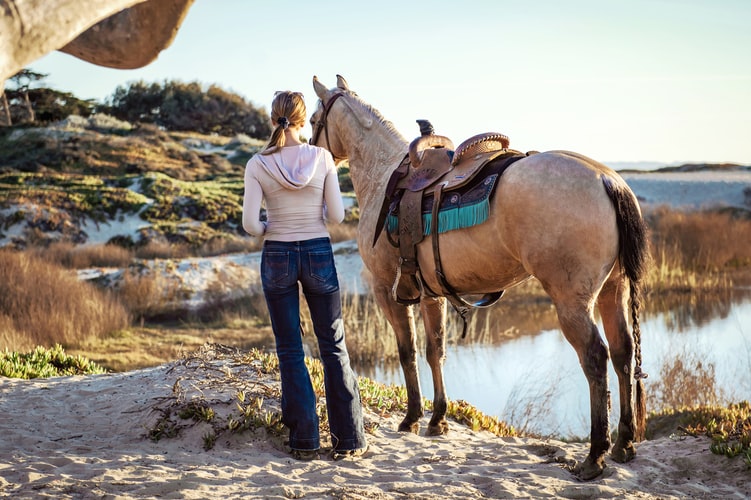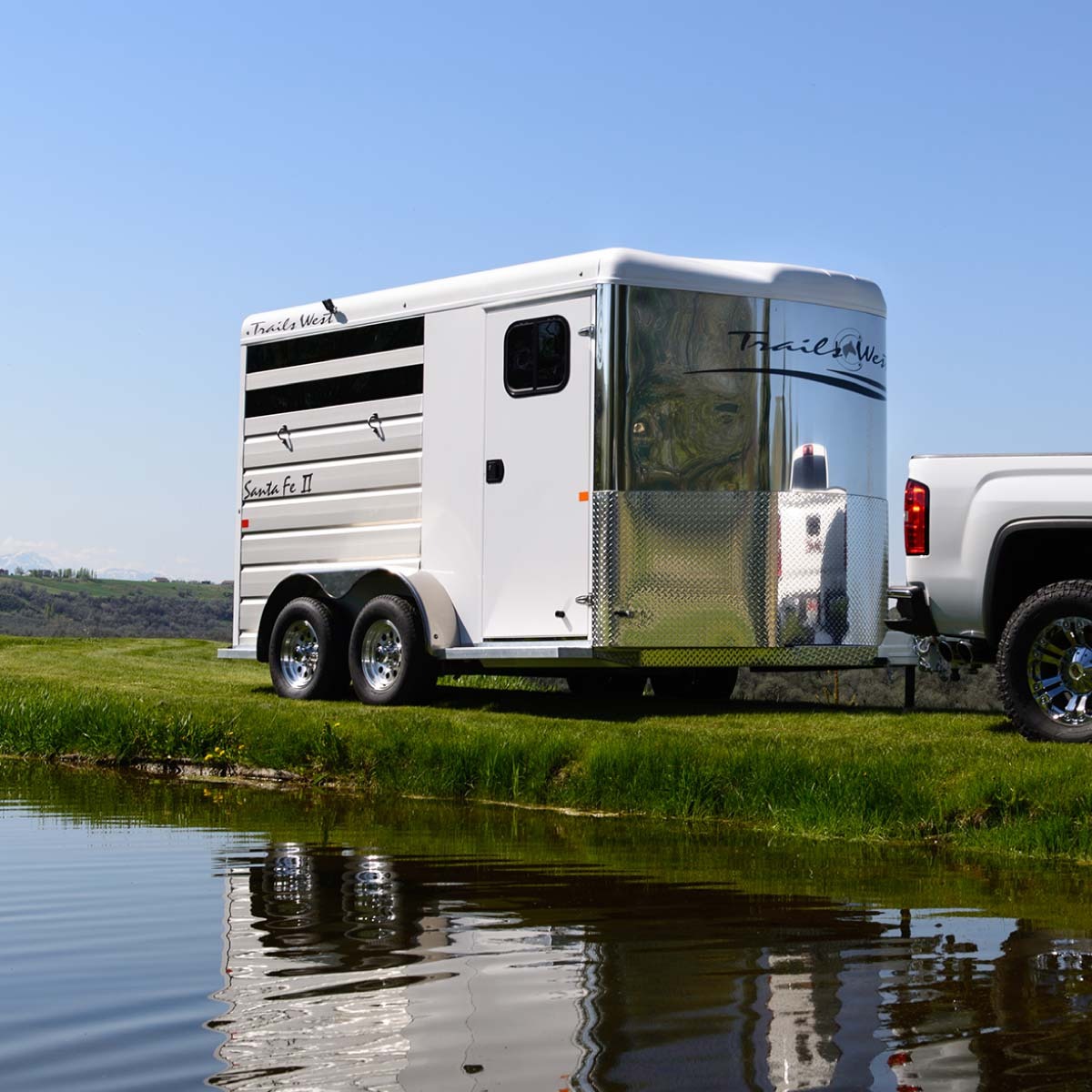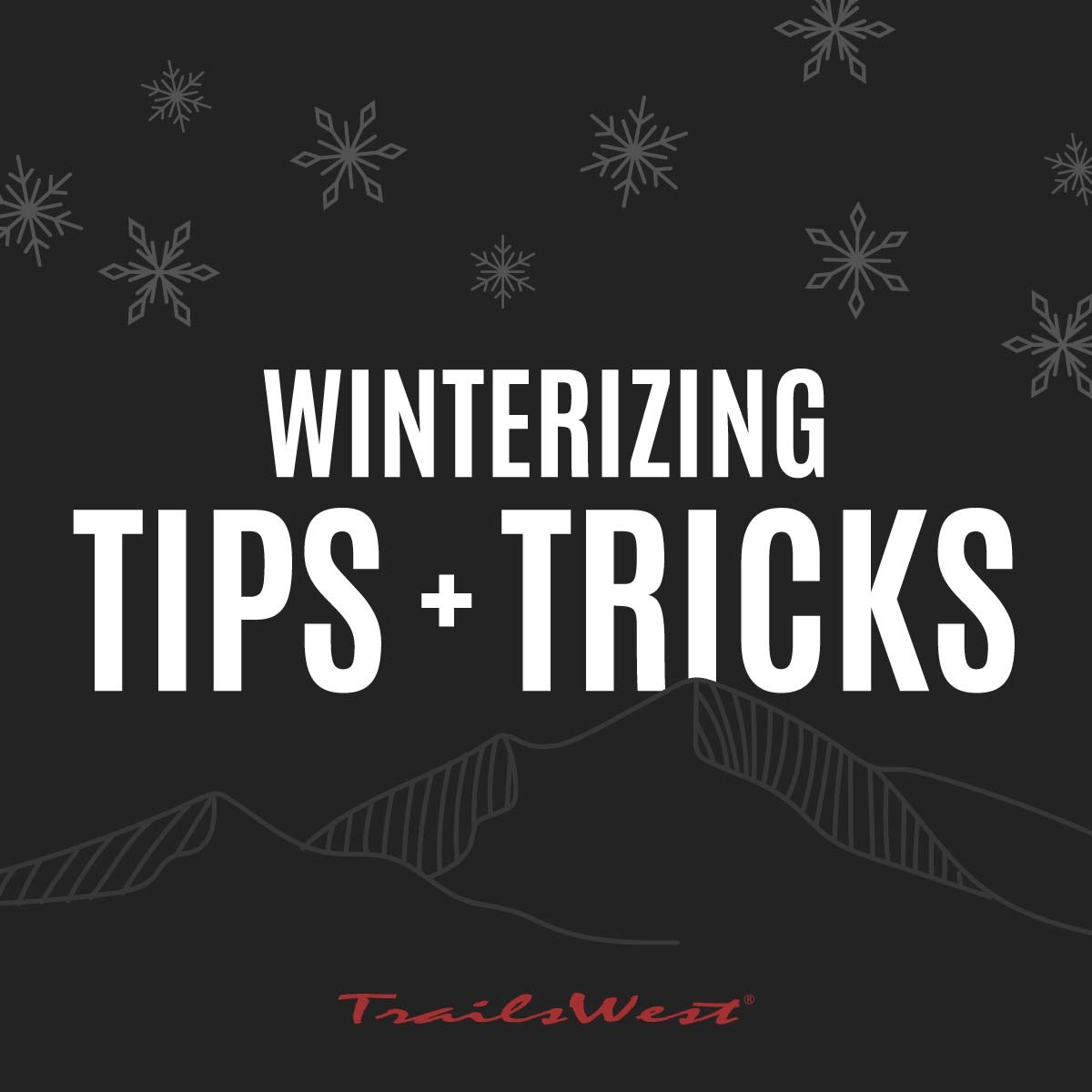Shopping for Western Saddles Online in 2021

Shopping for saddles is fun but not easy. And it’s become more difficult since the pandemic closed your favorite tack stores. As income tax refunds loom and the show season starts, we know many riders are shopping for tack, including Western saddles online this year.
You can find a million articles on the web about saddles. Most of them are introductory English vs. Western saddle content meant to promote tack stores. Here at Trails West, we know our customers are more advanced. Today, we’ll cover Western saddle sizes, uses, and tree design. If you’re saddle shopping online this season, this article is a must-read.
Size Matters
There are two main size points to consider: the horse’s back and the human’s bum. Let’s think of our horses first.
The Gullet: Full QH Bars vs. Semi Bars
You already know a saddle tree is the wood or fiberglass skeleton of a saddle. The gullet of your saddle is the space above your horse’s spine.
Today, nearly every American stock breed has been blended with — or wholly derived from — quarter horses. These horses will be more comfortable sporting a saddle built on a tree with full quarter horse bars.
- Most quarter horses, appaloosas, and paints have a broader back than other breeds.
- Extra-stocky thoroughbreds, draft-crosses, warmbloods, and Spanish breeds might prefer them too.
- Western saddles built in other countries aren’t always the right shape for our QHs and QH descendants. So be cautious about foreign-made saddles on eBay.
Saddles built on semi QH bars are narrower and should fit the average thoroughbred.
- Arabians have a unique body shape and will likely perform best in a saddle built for Arabs.
- With their fancy front-end action, Gaited horses may prefer a saddle designed specifically for their active shoulders.
Think about your horse’s withers, too.
- You might need a special size if your horse has enormous shark withers or no withers at all.
- If you’re not sure about your grade horse’s shape, check out this video on how to measure him.
Now, let’s think about riders.
Seat Sizes
Saddles are measured from the back of the swell (pommel) to the cantle. But the purpose of a saddle will affect how you sit, too. Generally speaking, 12″ — 14″ are considered youth sizes. Most small adult female riders will choose a 15″. Taller women, males, and those of us with a little junk in the trunk might prefer a 16″. Then, 17″, 18″, and up are considered the plus sizes.
- If you’re an English rider switching to Western, choose a western saddle that’s one inch or two inches smaller than your English seat.
Let all that sizing information simmer for a while, and let’s talk about saddle type when shopping for Western saddles online.
Western Saddles Online: Types to Know
At the lowest levels of competition — the lesson barn schooling show — saddle type won’t be a factor. But once you’re traveling to a rodeo grounds, joining any club, or competing out of town, you will be judged on your tack.
- Barrel saddles are built for speed on a fiberglass tree. They’re lighter, boast a tall horn for the rider to grab, and a high cantle to support a rider at speed. They’re made for galloping fast and turning hard.
- Equitation and Western Pleasure saddles are heavy and more ornate. They’ll place you in the right position for showing in rail classes, and the more “bling,” the better.
- Trail saddles don’t have bling. But they do have leather thongs you can use to tie up your gear.
- Roping saddles are built on heavy-duty trees and reinforced to take on the workload of roping cattle. They’re heavy and made for lots of rider activity.
These things don’t matter much at the local level. But once you’re leaving the property regularly in your new horse trailer, they’ll be critical.
At Trails West Trailers, our business is horse trailers. So we know competitive riders! We hope you’ve enjoyed our discussion of shopping for Western saddles online. If you’d like to learn more about our horse trailers or livestock trailers, contact us or click here to find a dealer.






